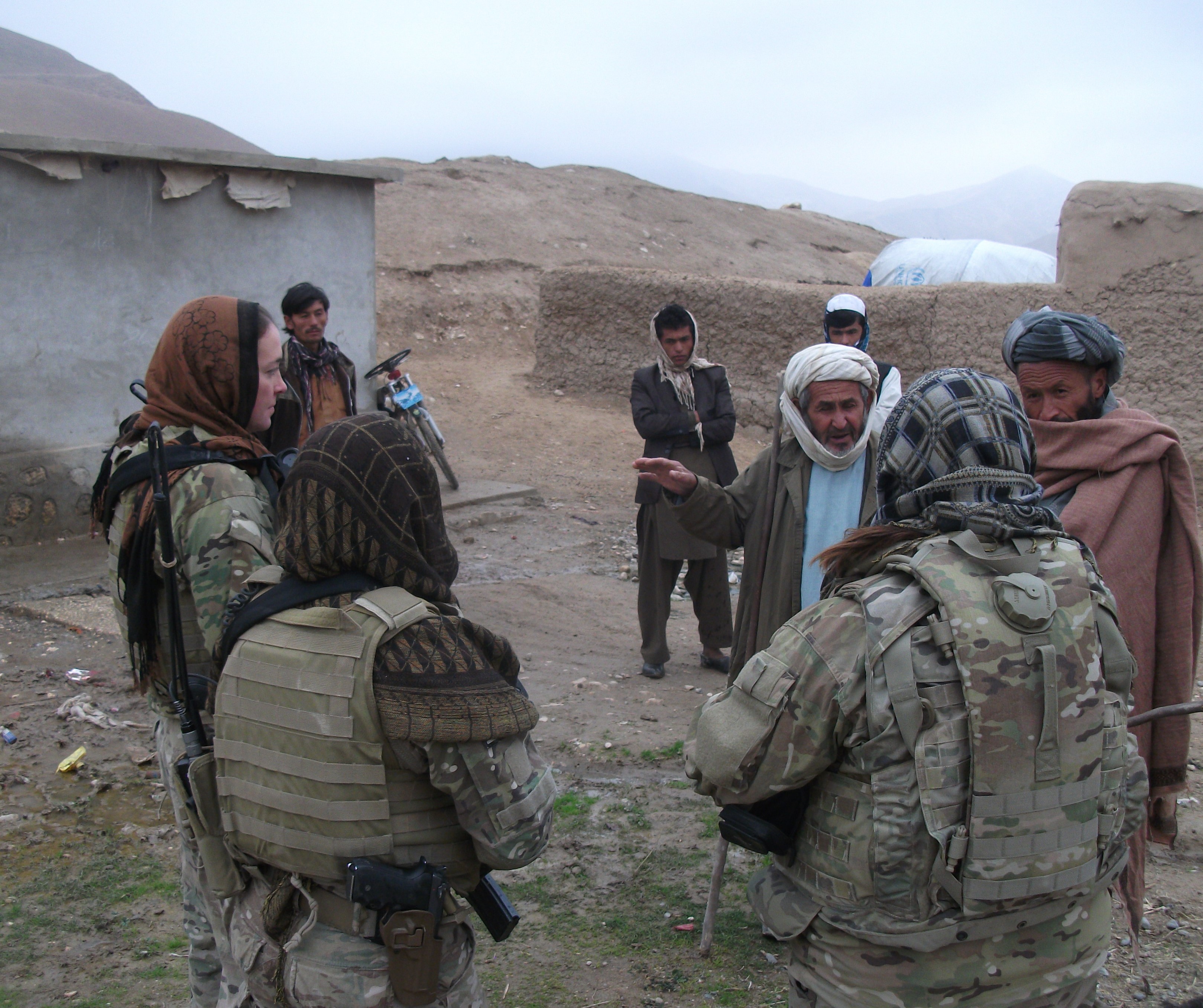
Incorporating the Principles of Women, Peace and Security into Irregular Warfare
Dr. Robert Redding – IWC Senior Irregular Warfare Advisor (Contractor, Valens Global)
Women have been instrumental in shaping the outcomes of irregular wars and guerrilla campaigns, from the ancient Amazons of Greek mythology to the female soldiers in the resistance movements of World War II. Their roles have spanned continents and cultures, including the female soldiers of the Viet Cong during the Vietnam War, the Kurdish women fighters in the recent conflicts in the Middle East, and the women of the Eritrean People’s Liberation Front. This enduring legacy amplifies the importance of recognizing and integrating women’s contributions in the context of modern irregular warfare. This rich tapestry of women’s involvement highlights the necessity for operationalizing the concepts of Department of Defense’s (DoD) Women, Peace and Security (WPS) Framework within the irregular warfare community of interest and reminds leaders and planners at all echelons — ignore women and their presence in the operational environment at your own peril.

The WPS framework should not just an afterthought; rather, it must be a cornerstone of the Department of Defense’s approach to irregular warfare. Incorporating WPS within the fabric of irregular warfare design, campaigning, and operations is a strategic imperative for the DoD, with WPS principles directly supporting all aspects of 2020 National Defense Strategy’s Irregular Warfare Annex. Irregular warfare is distinctively characterized by its strategic focus on the populace, recognizing that control, influence, or support of the people and population is the pivotal factor in achieving long-term objectives – in Clausewitzian terms, the center of gravity. It operates on the understanding that the population’s allegiance, support, or acquiescence is crucial to securing victory and establishing sustainable peace. Understanding the gender aspects of the operational environment can be a significant part of gaining and maintaining cognitive dominance in the human dimension of all irregular warfighting domains, of enhancing decision-making, and of having better operational effectiveness.
The origins of the DoD’s WPS framework are the relatively recent global movements for gender equality in peace and security, most notably the Fourth World Conference on Women in 1995 and the subsequent UN Security Council Resolution 1325. The United States committed to the principles of WPS with the enactment of the WPS Act of 2017, which mandates the integration of gender perspectives into national security affairs. In October 2023, the United States published the U.S. Strategy and National Action Plan, which presents five lines of effort—participation, protection, relief response and recovery, integration and institutionalization, and partnerships—which are essential aspects for addressing irregular warfare through a gender lens. Participation involves encouraging the active involvement of women and girls in peace and security decision-making, recognizing their crucial roles in shaping enduring peace agreements.
Participation, for instance, ensures that peace processes and conflict resolution strategies are inclusive and representative of the entire population. Studies indicate that when women are involved in peace negotiations, the resulting agreements are 35 percent more likely to last at least 15 years. Protection emphasizes safeguarding the human rights of women and girls, aiming to prevent and address gender-based violence, including in conflict and crisis situations. Relief response and recovery efforts are designed to ensure gender-responsive approaches in aiding those affected by conflict, guaranteeing women and girls’ safety and leadership in these processes. Integration and institutionalization seek to weave WPS principles throughout U.S. policies and programs, fostering an environment where gender analyses are fundamental to achieving equality. Lastly, partnerships focus on working with allies to incorporate WPS principles into their peace and security policies, enhancing collective efforts towards gender equality in peace processes.
The current DoD WPS Strategic Framework and Implementation Plan operationalizes these principles. They guide the military to not only protect women’s rights but to actively engage women in all stages of conflict prevention, management, and resolution. The Plan’s focus is on recognizing and amplifying women’s active and pivotal contributions to shaping security and peace initiatives.
In the context of irregular warfare, where non-state actors and unconventional strategies are prevalent, incorporating a gender perspective is particularly crucial. Gender analysis becomes a powerful tool when applied across the competition continuum, especially in assessing civil considerations like areas, structures, capabilities, organizations, people, and events (ASCOPE). Importantly, it goes beyond just the people part, encompassing the full spectrum of considerations that may be impacted by gender dynamics. Similarly, for operational variables — political, military, economic, social, information, infrastructure, physical environment, and time (PMESII-PT) — a gender lens helps identify how each factor can be differently experienced by different genders. For example, the economic impact of conflict might have gender-specific dimensions, such as the targeted disruption of industries predominantly employing women. In social terms, the narratives that shape community cohesion can have different implications for men and women, influencing how they support or resist irregular warfare efforts.
By consciously applying a gender perspective, irregular warfare practitioners can craft strategies that are more responsive to the real dynamics of the environments in which they operate. This means not only recognizing the roles women play but actively working to ensure that the contributions of all genders are considered. This approach not only aligns with ethical mandates but also serves as a force multiplier, enhancing the legitimacy and efficacy of irregular warfare operations.
The significance of WPS initiatives in irregular warfare extends crucially to combating extremism. Extremist factions frequently manipulate gender norms as a tool for domination, employing gender-based violence and other tactics that exploit gender differences to maintain power and control. A notable real-world example of extremist factions exploiting gender norms for domination is the case of Boko Haram in Nigeria. Boko Haram, an Islamist militant group, has used gender-based violence, including abductions, sexual slavery, and forced marriages, as a tactic to instill fear, exert control over communities, and further their ideological agenda. The abduction of 276 schoolgirls from Chibok in 2014 is a stark illustration of how these groups manipulate gender norms and commit gender-based violence to maintain power and spread terror. This act not only aimed to deter girls from pursuing education, which the group opposes, but also served to destabilize communities and gain international notoriety for their cause. By promoting gender equality and empowering women in local communities, irregular warfare strategies can effectively disrupt the asymmetric societal structures that extremist groups depend on, challenging their ability to exploit gender for coercive purposes.
The historical and ongoing participation of women in irregular warfare, spanning from mythic heroines to contemporary freedom fighters, underscores the critical need to amplify, illuminate, and address the principles of the WPS framework as they pertain to irregular warfare. This narrative not only acknowledges the indomitable spirit and contributions of women across ages and conflicts but also lays down a compelling argument for the deliberate integration of gender perspectives in modern warfare strategies. The Department of Defense’s adoption of the WPS framework transcends mere policy compliance; it represents a strategic pivot towards recognizing and harnessing the diverse strengths and insights that women bring to the theater of irregular warfare. The imperative to weave gender considerations into the operational and tactical levels of warfare planning is clear: it is not just about ensuring equitable participation or protecting rights; it is about enriching the irregular operational landscape with nuanced understandings of gender dynamics that can inform more effective, inclusive, and sustainable security, operational, and ultimately conflict resolution strategies. The future of irregular warfare demands a holistic approach where gender is not an afterthought but a pivotal axis around which strategies are devised and executed, ensuring that no potential ally in the quest for peace is overlooked or undervalued.
